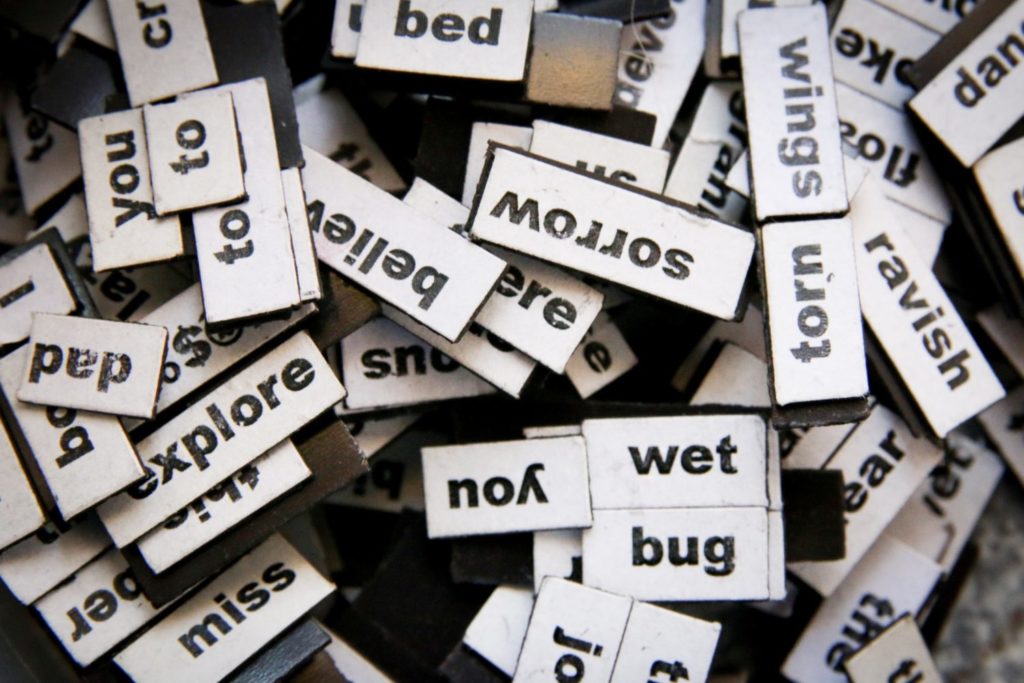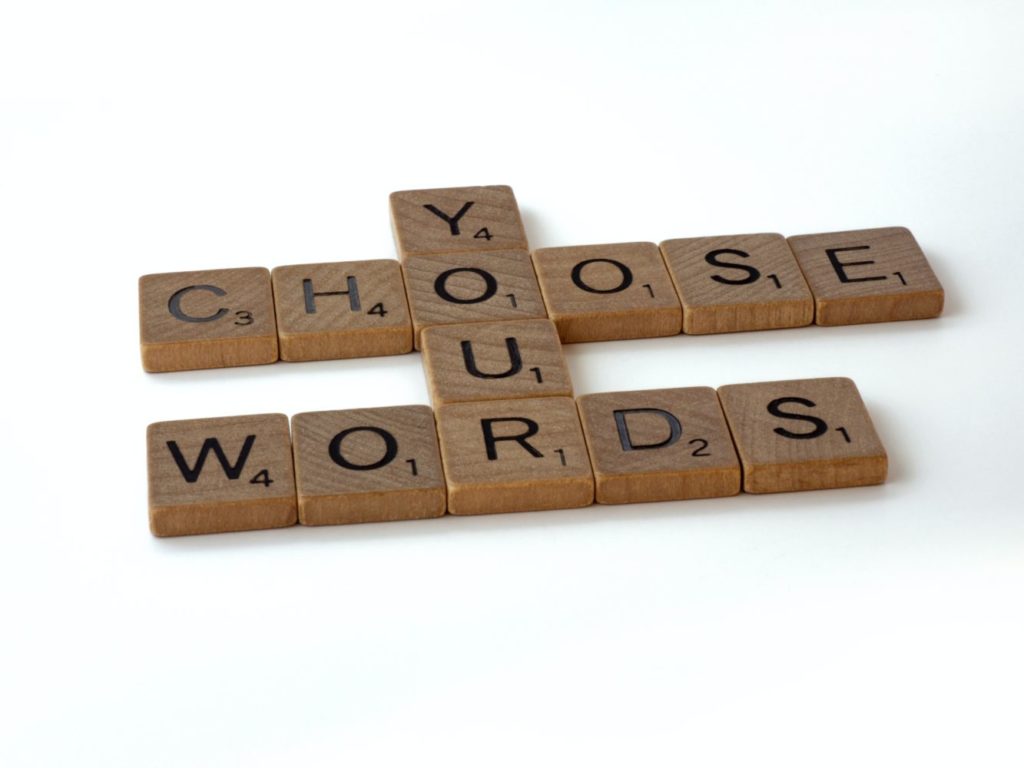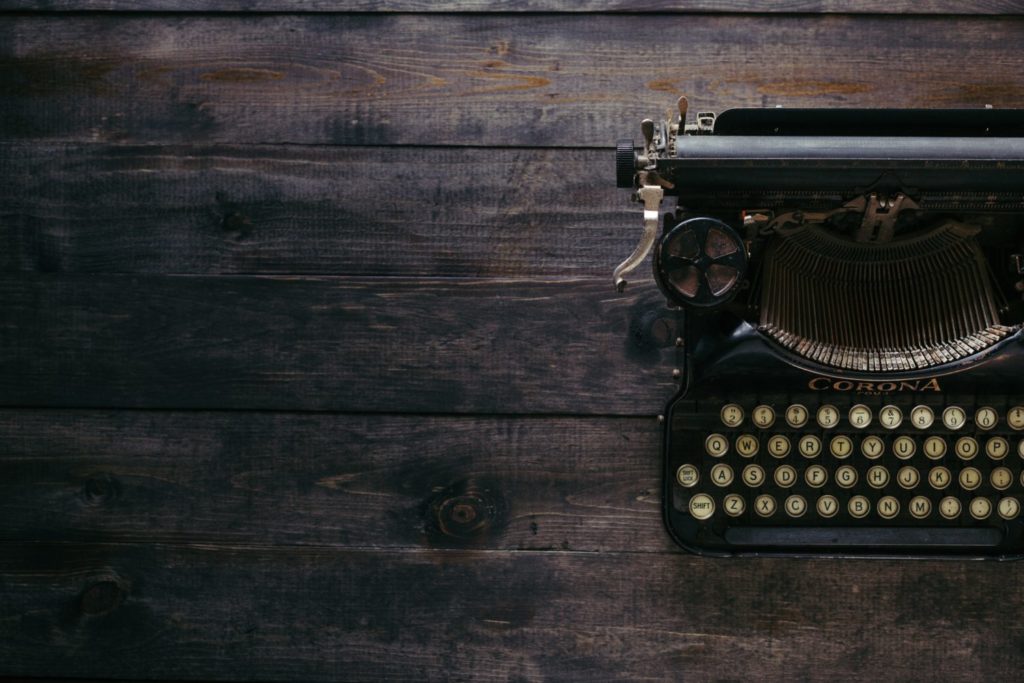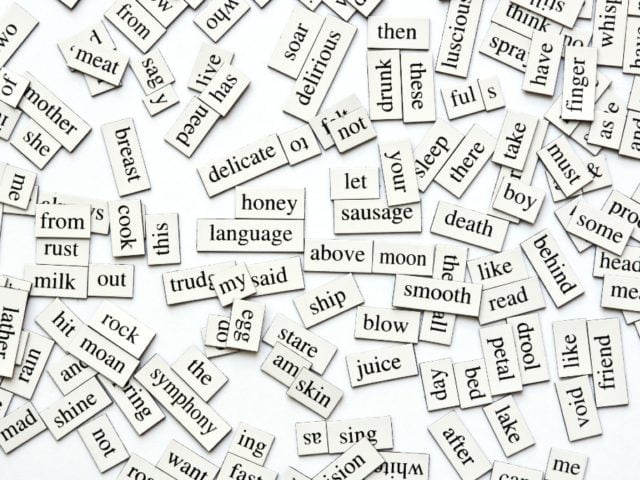I’m sure many of you remember learning about adjectives at school. But can you remember what they are, as well as why we use them and when?
And what is a descriptive adjective? Why is it important that we, as writers, use them?
In the following guide, we’ll tell you exactly what descriptive adjectives are, the different types of descriptive adjectives, and how to use them effectively in your work. We’ll even provide you with a descriptive adjectives list to give you plenty of ideas for making your writing stronger.
What Is A Descriptive Adjective?
A descriptive adjective is one that modifies a noun by describing it. Let’s look at a couple of examples:
- The house was huge.
- Peter loved chewy sweets.
The descriptive adjectives in these two sentences are huge and chewy. From the word huge, we now have an idea in our minds about the size of the house. We also know the type of sweets Peter likes from the word chewy.
Perhaps it’s all coming back to you now, and you’re remembering that adjectives are describing words. There are many different types of adjectives, but descriptive adjectives form the most comprehensive group.
Here are a few examples of non-descriptive adjectives:
Demonstrative Adjectives
Where did you find this book?
How much is that ring?
These photos are clear.
Distributive Adjectives
Either tool will work.
Neither tool was successful.
Every shop is open.
Quantitative Adjectives
The sun was shining throughout the whole day.
We need more resources.
I’ve eaten enough chips.
Possessive Adjective
Those are your dogs.
I want to eat my dinner.
I like our car.
Interrogative Adjectives
Whose socks are those?
What magazine are you buying?
Which chair is broken?
These examples differ to descriptive adjectives because no information is given about the noun that’s being modified. Taking the last example, we don’t know what colour the chair is, what material it’s made out of, if it’s a dining chair or one used for another purpose.

Types Of Descriptive Adjectives
Various references highlight that there are thirteen different types of adjectives. Examples of some of them have been detailed above, but here’s the entire list:
- Attributive adjectives
- Comparative adjectives
- Compound adjectives
- Demonstrative adjectives
- Descriptive adjectives
- Distributive adjectives
- Interrogative adjectives
- Limiting adjectives
- Participial adjectives
- Predicate adjectives
- Possessive adjectives
- Proper adjectives
- Superlative adjectives
In this article we’re going to focus on descriptive adjectives, and how they provide additional information about the associated noun by describing its characteristics or by altering it. This is especially useful in writing when we’re trying to create a picture in the reader’s mind.
For example, if you’re writing a ghost story that takes place in a house, and you want the reader to feel goosebumps, you might describe the house as eerie:
- Sarah looked up at the eerie house.
Or if you want to describe another type of house to create a contrasting feeling, you can use a different descriptive adjective. For example:
- Sarah saw the beautiful house.
Both descriptive adjectives portray very different houses.
Perhaps your story has a scene that takes place by the sea. See how these two descriptive adjectives once more bring contrasting images of the same noun to mind, just by using different descriptive adjectives:
- Peter walked into the freezing sea.
- Peter walked into the balmy sea.
As you can see, descriptive adjectives can help to bring your writing to life.
Descriptive adjectives can be placed into sub-categories, as follows.
Comparative Descriptive Adjectives
This type of descriptive adjective is used to compare one noun with another. They have comparative versions. For example:
- Calm and calmer
- Big and bigger
- Strong and stronger
- Dim and dimmer
- Tall and taller
- Pretty and prettier
- Thin and thinner
- Quicker and quicker
- Soft and softer
- Happy and happier
- Silly and sillier
Some comparative descriptive adjectives use two syllables, generally the words ‘more’ or ‘less’, to form the comparative term. For example:
- More beautiful (or less beautiful)
- Less interesting (or more interesting)
- Less tired (or more tired)
- More clever (or less clever)
Here are some examples of how to use comparative descriptive adjectives in a sentence:
- The new car is bigger than the old one
- The latest model is more expensive than similar models
- My new towels are softer than my other towels.
- This swimming pool is deeper than other swimming pools
- His phone was cheaper than his previous one.
- Some athletes can run faster than other athletes.
- This book is lighter than that book
- Her new television is heavier than her last one
- The old curtains were thicker than the new ones
- Their holiday was less expensive than similar holidays
- The table over there is stronger than this table
- The new boy is more difficult than the other boys
Superlative Descriptive Adjectives
Superlative descriptive adjectives are similar to comparative descriptive adjectives, but they relate to the highest/lowest level of comparison. For example:
- Coldest
- Quietest
- Shiniest
- Longest
- Curliest
- Brightest
Let’s look at how these can be used in a sentence:
- The new car is the biggest I’ve ever owned.
- The latest model is the most expensive ever built.
- His cauliflower was the smallest in the produce show.
- This holiday is the cheapest I’ve ever had.
- She was the least famous person in the room.
- That tree is the tallest in the world.
- The horse was the slowest in the race.
- Her shopping bill was the least expensive one she’d ever had.
- The cake was the creamiest one in the shop.
- She was the oldest teacher in the school.
- He was the cleverest chess player in the club.
- She was the youngest entrant in the competition.
- It was the most wonderful experience he’d ever had.
- The test was the easiest one he’d ever taken.
- The coffee they sold was the strongest in the city.
Positive Descriptive Adjectives
Positive descriptive adjectives describe a person, place, thing, idea, or
experience in a good, positive way.
This type of adjective isn’t used for comparison. Here are a few examples of positive descriptive adjectives:
- Amazing
- Ambitious
- Amusing
- Becoming
- Blissful
- Bold
- Carefree
- Caring
- Charismatic
- Dazzled
- Deluxe
- Dynamic
- Enchanting
- Energetic
- Excited
- Fabulous
- Fearless
- Fun
- Glowing
- Graceful
- Generous
- Happy
- Heavenly
- Helpful
- Illustrious
- Inspirational
- Inspired
- Jolly
- Jovial
- Jubilant
- Keen
- Kind
- Knowingly
- Lavish
- Loyal
- Lucky
- Magical
- Memorable
- Miracle
- Neat
- Nice
- Noticeable
- Original
- Outgoing
- Outstanding
- Perfect
- Polite
- Positive
- Quaint
- Quick-witted
- Quiet
- Radiant
- Reliable
- Rich
- Safe
- Serene
- Super
- Tasty
- Thankful
- Trusting
- Ultimate
- Unique
- Uplifted
- Valiant
- Valuable
- Vibrant
- Warm
- Wise
- Worthy
- Xenial (hospitable)
- Xenodochial (friendly)
- Young
- Youthful
- Yummy
- Zany
- Zestful
- Zing
Let’s put a few of these into practice:
- The boy was happy.
- Her test score was perfect.
- His room is neat.
- The town is quaint.
- Their pudding tastes heavenly.
- The holiday was magical.
- The nurse was kind.
- The coat is zany.
- The old man’s book was valuable.
- Her steak was tasty.
- The woman’s face is glowing.

Examples Of Descriptive Adjectives
We’re now going to give you a list of descriptive adjectives to use in your writing:
- Adorable
- Adventurous
- Agreeable
- Alive
- Aloof
- Amused
- Angry
- Annoying
- Anxious
- Arrogant
- Ashamed
- Attractive
- Auspicious
- Awful
- Bad
- Beautiful
- Beige
- Black
- Blue
- Blushing
- Bored
- Brave
- Bright
- Brown
- Bumpy
- Busy
- Calm
- Careful
- Cautious
- Charming
- Cheerful
- Clean
- Clear
- Comical
- Congenial
- Cordial
- Crazy
- Crooked
- Decayed
- Delicious
- Determined
- Dilapidated
- Distraught
- Dim
- Dizzy
- Drab
- Dreadful
- Droll
- Dull
- Elated
- Elderly
- Emaciated
- Embarrassed
- Enormous
- Enthusiastic
- Envious
- Exultant
- Fancy
- Fantastic
- Filthy
- Flat
- Fresh
- Friendly
- Fuzzy
- Ghastly
- Gigantic
- Glamorous
- Gleaming
- Greasy
- Green
- Glorious
- Gorgeous
- Grubby
- Grumpy
- Handsome
- Helpless
- High
- Hollow
- Homely
- Horrific
- Hot
- Icy
- Ideal
- Immense
- Irate
- Irritable
- Itchy
- Jealous
- Jittery
- Jocular
- Juicy
- Jumbo
- Jumpy
- Kind
- Knotty
- Knowledgeable
- Large
- Lazy
- Lethal
- Little
- Lively
- Lonely
- Low
- Ludicrous
- Magnificent
- Mammoth
- Massive
- Miniature
- Miniscule
- Minute
- Misty
- Modern
- Moody
- Muddy
- Mysterious
- Narrow
- Nasty
- Naughty
- Nervous
- Nonsensical
- Nutritious
- Obedient
- Oblivious
- Obnoxious
- Octagonal
- Odd
- Opulent
- Orange
- Outrageous
- Petite
- Plain
- Pleasant
- Poised
- Pompous
- Precious
- Proud
- Pungent
- Purple
- Quick
- Quiet
- Quizzical
- Rainy
- Rectangular
- Red
- Relieved
- Repulsive
- Ripe
- Robust
- Rotten
- Rough
- Round
- Salty
- Sarcastic
- Selfish
- Shaky
- Sharp
- Short
- Silky
- Silly
- Skinny
- Slimy
- Slippery
- Small
- Smarmy
- Smiling
- Smooth
- Smug
- Sparkling
- Stale
- Steep
- Sticky
- Strange
- Stunning
- Tan
- Tart
- Teak
- Tender
- Tense
- Terrible
- Thick
- Thoughtful
- Thoughtless
- Triangular
- Thrilled
- Tight
- Ugly
- Unbelievable
- Upset
- Unimaginable
- Unsightly
- Unusual
- Uptight
- Vast
- Vexed
- Victorious
- Vital
- Vivacious
- Vivid
- Wacky
- Wealthy
- Weary
- Wet
- Whopping
- Witty
- Wonderful
- Wobbly
- Wooden
- Worried
- Wretched
- Xenial
- Yellow
- Young
- Yummy
- Zany
- Zippy

Compound Descriptive Adjectives
Compound descriptive adjectives are where two words are used to
form the description. The following are some examples of compound terms:
- All-inclusive
- Baby-faced
- Bad-tempered
- Brightly-lit
- Broken-hearted
- Bullet-proof
- Cold-blooded
- Cross-country
- Deeply-rooted
- Densely-populated
- English-speaking
- Fast-paced
- Four-sided
- Full-length
- Green-eyed
- Heavy-handed
- High-heeled
- High-spirited
- Ice-cold
- Kind-hearted
- Life-giving
- Long-lasting
- Long-winded
- Middle-aged
- Mouth-watering
- Narrow-minded
- Never-ending
- Next-door
- Old-fashioned
- Open-minded
- Part-time
- Red-blooded
- Self-centred
- Short-haired
- Short-tempered
- Sure-footed
- Ten-minute
- Thick-skinned
- Thought-provoking
- Tight-fisted
- Well-behaved
- Well-educated
- Well-known
- World-famous
- Yellow-striped
- Young-hearted
Descriptive Adjective Rules And Best Practices
We’ve given you lots of different examples of descriptive adjectives, but there are some rules to follow regarding their use.
When you’re writing a sentence, it’s important that descriptive adjectives are used in the correct adjective order. Descriptive adjectives come after limiting adjectives (which define the noun rather than describing it. ‘Articles’ are examples of these – ‘a’, ‘an’ and ‘the’). For example, we would write Sally ate a delicious cake. If we wrote Sally ate delicious a cake, it wouldn’t make sense. Here are some more examples:
- She wrote three long books (good)
- She wrote long three books (not good)
- Keith ordered some new furniture (good)
- Keith ordered new some furniture (not good)
- The cat jumped up a tall tree (good)
- The cat jumped up tall a tree (not good)
From these examples, we can see how important correct adjective order is. If it isn’t written correctly, it’s confusing. It becomes even more difficult to understand when more than one descriptive adjective is used to describe the noun.
Let’s look at a few examples:
- The English angry little man was hungry (not good)
- The little English angry man was hungry (still not good)
- The angry little Englishman was hungry (better)
- Steven was eating a sugary huge cream cake (not good)
- Steven was eating a cream huge sugary cake (still not good)
- Steven was eating a huge sugary cream cake (better)
- She was reading the non-fiction old, battered book (not good)
- She was reading the battered non-fiction old book (still not good)
- She was reading the old, battered non-fiction book (better).
Descriptive adjectives enhance our writing, but it’s very easy to overuse them. So think carefully about which descriptive adjectives to use to be the most effective. Using lots of descriptive adjectives to describe one noun isn’t always better.
For example:
- The boy has a brilliant bright wide infectious smile.
If you use too many descriptive adjectives, the word being described can become lost. Two descriptive adjectives in this instance would be enough:
- The boy has a wide infectious smile.
In some cases, using one strong descriptive adjective can paint a picture in the reader’s mind more vividly than using two or three. We’ll look at a couple of examples:
- The girl opened her mouth and out came a loud high-pitched scream.
We can imagine what the scream would sound like, but using just one, more powerful descriptive adjective can make us almost hear it for ourselves:
- The girl opened her mouth and out came a piercing scream.
Example two:
- The miserable cross teacher moaned at us.
From this description, we know the teacher isn’t very happy. But we can swap one word for the two descriptive adjectives to create a more vivid image of the teacher and how they are feeling:
- The grouchy teacher moaned at us.
Descriptive Adjectives In Literature
Descriptive adjectives play a big part in our writing, but it’s important to understand them and their use – and understand how they can bring your work to life. Here are some examples of quotes by famous writers, who – by simply adding a few adjectives – fill our minds with vivid imagery!
“…his voice was like the cracking of ice on a winter lake, and the words were mocking”
― George R.R. Martin, A Game of Thrones
“Kylpaitryc’s eyes streamed tears as he coughed explosively on harsh, sinus-raping smoke.”
― David Weber, At the Sign of Triumph
“Even in its first faint traces, love could alter a landscape. It wrote unimagined stories and made the most beautiful, forbidding places.” —Anna-Marie McLemore, Wild Beauty
“My sister, Mrs. Joe, with black hair and eyes, had such a prevailing redness of skin that I sometimes used to wonder whether it was possible she washed herself with a nutmeg-grater instead of soap. She was tall and bony, and almost always wore a coarse apron, fastened over her figure behind two loops, and having a square impregnable bib in front, that was stuck full of pins and needles.”
—Charles Dickens, Great Expectations
Conclusion
We hope you have found this article useful, and now, whenever you’re looking for descriptive words to bring your writing to life, you have the perfect reference guide to turn to.
Hopefully our descriptive adjectives examples will have inspired you and ignited your creative juices!
Jericho Writers is a global membership group for writers, providing everything you need to get published. Keep up with our news, membership offers, and updates by signing up to our newsletter. For more writing articles, take a look at our blog page.











